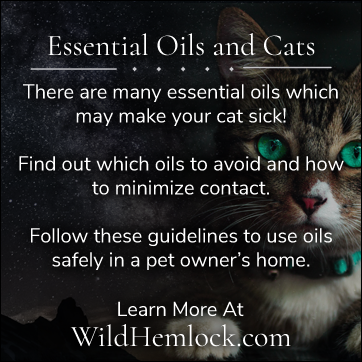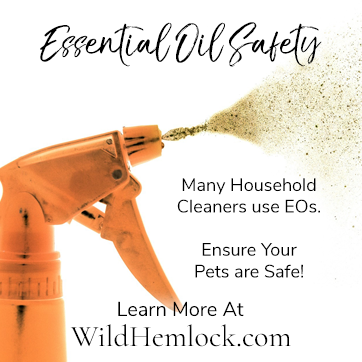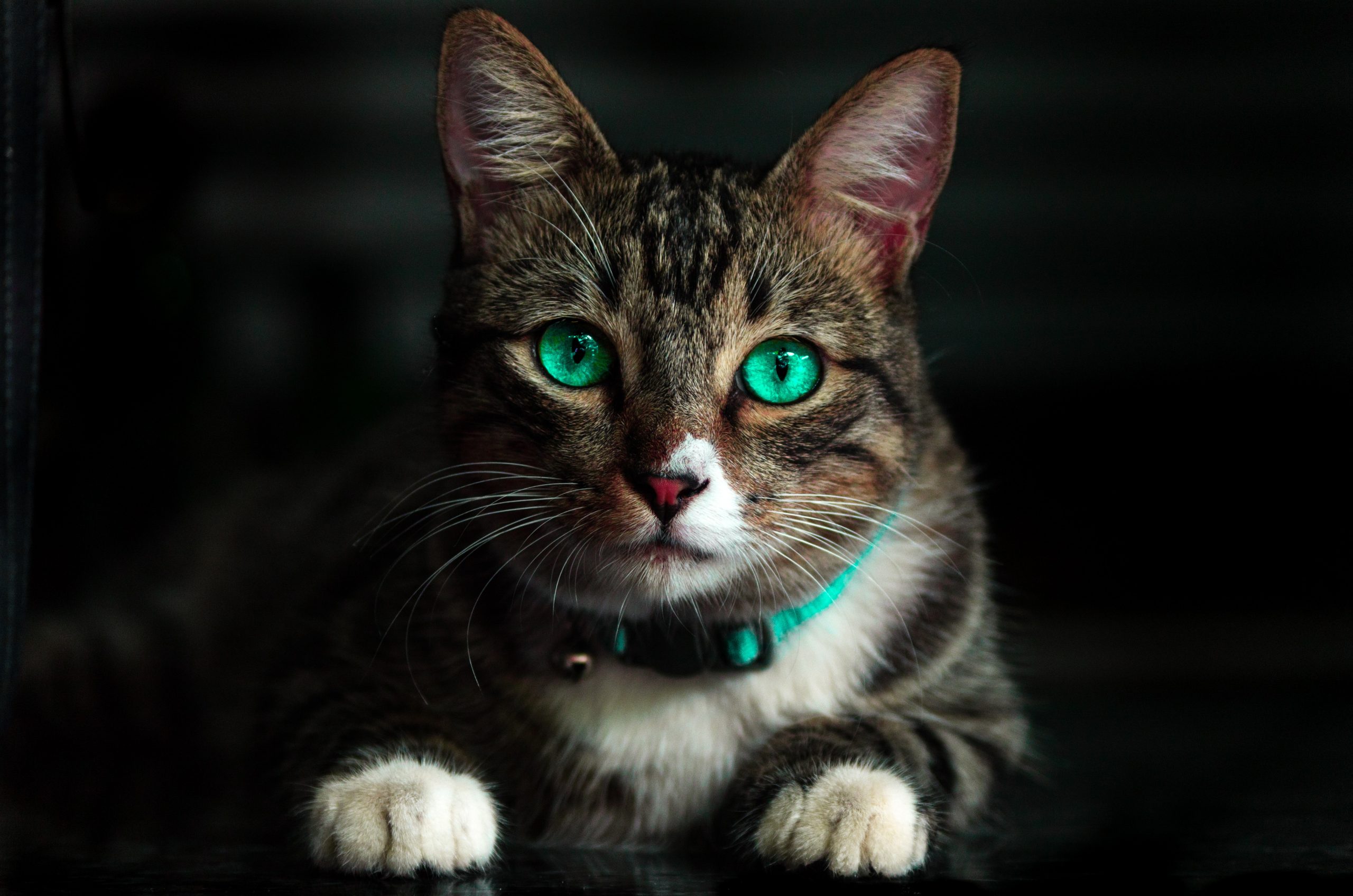
While I was planning on writing about my Anti-Spider Spray, I realized that the heart of the article was really about protecting my cats from certain essential oils. Most homemade bug sprays calls for peppermint oil, lemon oil, or both – which, as we’ll see, isn’t good for our feline family members. But that doesn’t necessarily mean all essential oils are bad. It means that we have to exercise a little moderation.
The primary reason that we have to be extra careful with our pet’s exposure to essential oils is that they do not metabolize these potent chemicals the same way that us humans do. Cats do, in fact, metabolize essential oils. Cats metabolize them much slower than most domestic animals and humans. Additionally, certain substances affect them differently than they affect humans. Lastly, the pathway of exposure changes how the feline body absorbs and metabolizes the oil [1].
There are a handful of chemical components of many essential oils which make them unsafe for cats. The most abundant and dangerous are Limonene (or d-limonene), Linalool, Eucalyptus, Phenols, Pinene, Terpineol, and Benzyl Alcohol. These are found in many essential oils and plants which the ASPCA deems toxic for cats [1].
Avoid These Oils Always [1]
- Citrus Oils
- Lemon
- Lime
- Orange (all types)
- Grapefruit
- Bergamot
- Mandarin
- Tangerine
- Petitgrain
- Neroli
- Pines
- Pine
- Fir
- Cypress
- Juniper
- Spruce
- Bitter Almond
- Boldo
- Calamus
- Garlic
- Horseradish
- Mustard
- Sassafras
- Wormseed (Chemopodium)
- Pennyroyal
- Birch
- Wintergreen
- Cinnamon
- Clove
- Thyme
- Oregano
- Savory
- Cassia
- Tansey
- Cajuput
The following oils are listed as toxic to cats, but very little evidence is available, outside of overuse. These oils are toxic in high amounts and long exposures.
- Peppermint
- Tea Tree
In order to avoid overexposure to any essential oil, it is important to identify the ways a cat comes into contact with them. One of the most popular ways to use essential oils is in diffusers. These machines permeate the indoor climate with the volatile chemicals found in essential oils and activate a human’s olfactory senses. Unfortunately for our felines, it is easy to overexpose them to essential oils in this manner. These particles are either inhaled or licked up during regular self bathing [2].
Still, there are safe ways to enjoy aromatherapy and not disrupt your cat’s health [2].
Optimally, buy or make your own beeswax candles (without any artificial colors or scents). Beeswax candles create significantly less soot and other residues than traditional paraffin wax candles [3]. Soy based candles are also much cleaner than paraffin wax. Paraffin candles contain benzene rings, which are harmful to cats like benzyl alcohol [2].

Alternatively, you can avoid aromatherapy altogether, and use essential oils in other ways. These include oils diluted in carrier oils, salves, lotions, scrubs, and many more!
Lastly, the cleaners you use may expose your feline furbaby to essential oils. Most cleaners contain a small amount of oils for scent, but some use them as the cleaning agent. Most orange cleaners and degreasers come from orange peels – a citrus oil cats need to avoid! Follow these guidelines with these cleaners.
Despite all these warnings, there are many ways to use essential oils in effective, science backed ways around the house. Outdoors, d-Limonene makes an excellent grill degreaser. Wintergreen oil is one of my favorites to use topically (humans only!). What is important is finding accurate sources for information and not believing everything you read.
Do you like WildHemlock.Com?
Support with Paypal!
Sources
- “The Science Behind Cats and Essential Oils – Dr. Melissa Shelton.” London Alternative Veterinary Services, 12 January 2018. <https://londonalternativevet.com/2018/01/12/essential-oils-with-pets-dr-melissa-shelton/>
- “Are Essential Oils and Scented Candles Safe for Pets?” Veterinarians.com. <https://www.veterinarians.com/features/are-essential-oils-scented-candles-safe-for-pets>
- S. C. Lee, et al. “Characteristics of emissions of air pollutants from mosquito coils and candles burning in a large environmental chamber.” Atmospheric Environment, B. Wang, vol. 40, no. 12, April 2006, pp. 2128-2138. Science Direct, <https://www.sciencedirect.com/science/article/pii/S1352231005011416>

